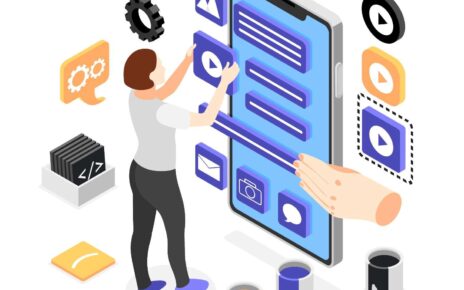Introduction:
In a world where seamless connectivity is paramount, apps like Airdroid have revolutionized the way we manage our devices. Airdroid, with its versatile features for file transfer, remote access, and device management, has become a benchmark for developers aiming to create similar applications. If you’re intrigued by the prospect of developing your own app like Airdroid, this comprehensive guide will walk you through the key steps, considerations, and features necessary to make your application stand out.
Understanding the Core Features of Airdroid:
Before diving into the development process, it’s essential to understand the core features that make Airdroid a popular choice among users:
- Wireless File Transfer: Airdroid allows users to transfer files wirelessly between devices, eliminating the need for cables or additional hardware. Your app should prioritize seamless and fast file transfers.
- Remote Access and Control: Airdroid enables users to access and control their devices remotely. Implementing a similar feature in your app will enhance user convenience, allowing them to manage their devices from anywhere.
- Notification Mirroring: Airdroid mirrors notifications from a user’s phone to their computer. Consider incorporating this feature to keep users informed about their device activities even when they are not physically present.
- SMS and Call Management: Airdroid facilitates the management of SMS messages and calls from a computer. Integrating this functionality into your app enhances the overall user experience.
Now, let’s delve into the step-by-step process of creating an app like Airdroid:
- Market Research: Conduct thorough market research to understand user needs, preferences, and existing competition. Identify the unique features that will set your app apart from others in the market.
- Define Your App’s Purpose: Clearly define the purpose of your app. Determine whether it will focus solely on file transfer, remote access, or a combination of features. This clarity will guide your development process.
- Choose the Right Technology Stack: Select a technology stack that aligns with your app’s requirements. Consider factors such as platform compatibility, scalability, and security.
- User Interface (UI) and User Experience (UX) Design: Design an intuitive and user-friendly interface. Prioritize a seamless user experience to ensure that even non-technical users can navigate and utilize your app effortlessly.
- Wireframe and Prototype: Create wireframes and prototypes to visualize the app’s structure and functionality. This step allows you to identify potential issues early in the development process.
- Development: Begin the development phase, focusing on the core features identified earlier. Implement robust security measures, especially when dealing with remote access and file transfers.
- Testing: Conduct thorough testing to identify and resolve any bugs or issues. Testing should include various devices and operating systems to ensure compatibility.
- Deployment: Once testing is complete, deploy your app on relevant app stores. Optimize the app store listings with compelling descriptions, screenshots, and promotional material.
- User Feedback and Iteration: Encourage users to provide feedback and monitor app reviews. Use this feedback to make necessary improvements and updates.
- Marketing and Promotion: Develop a comprehensive marketing strategy to promote your app. Utilize social media, influencers, and other channels to create awareness and drive downloads.
Conclusion:
Making an app like Airdroid requires a strategic approach, attention to detail, and a commitment to delivering a seamless user experience. By understanding the core features, conducting thorough research, and following a systematic development process, you can position your app as a reliable and feature-rich solution for users seeking efficient device management. As you celebrate the completion of your app on its first birthday, continuously innovate and adapt to meet the evolving needs of your user base.




